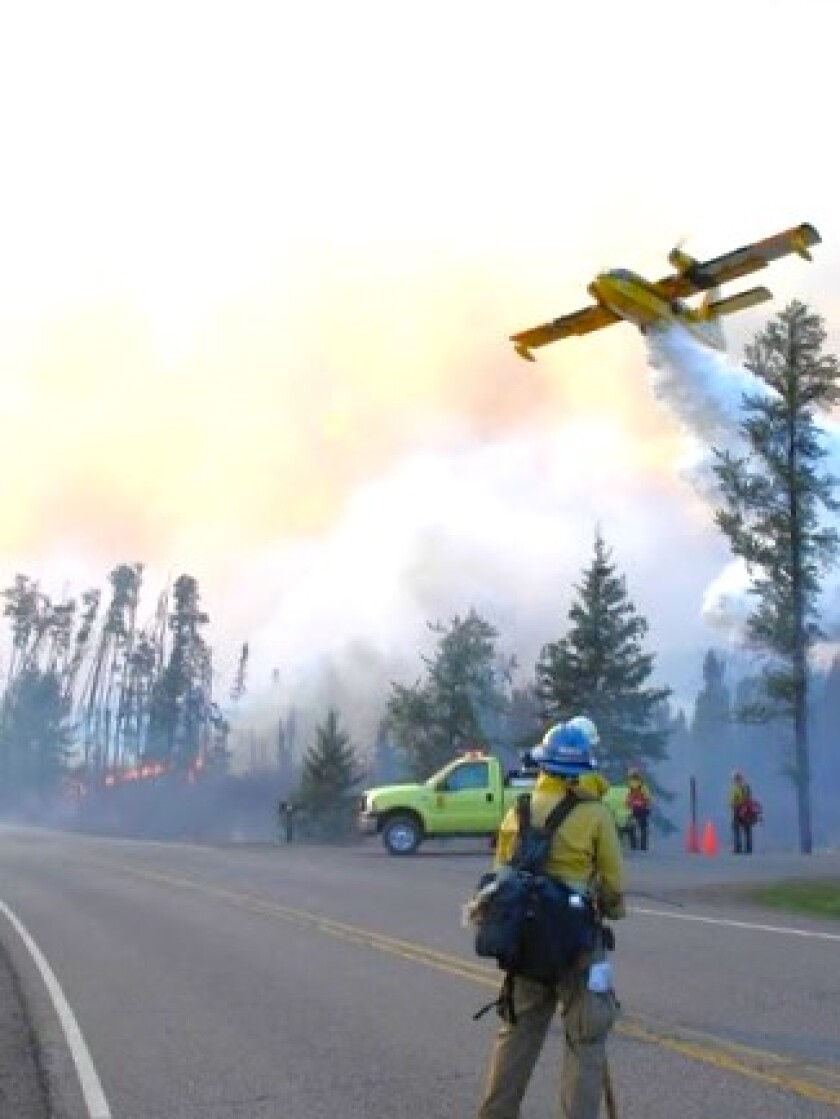DULUTH — Federal, state and local officials picked an opportune time to discuss the need for federal wildfire prevention grants on Monday, with the Northland’s fire danger skyrocketing under bone-dry conditions and high winds.
With virtually no snow on the ground across the region this winter and no major precipitation in sight, fire danger will increase in Minnesota and Wisconsin every day without rain.
ADVERTISEMENT
Spring is the region’s busiest fire season during most years, with last year's dead and dry grasses and leaves now airing out and ready to burn. The danger will continue until spring rains turn the landscape green.
This year’s spring fire season will definitely be longer than most, with a record snowless winter across the region, drought deepening across the region and unseasonably warm and dry conditions far earlier than usual. Whether more and bigger fires actually occur will depend on how frequent rain falls and how hot and windy March and April days get.
Already this season, Minnesota has seen more than 125 wildfires burn across nearly 4,700 acres, according to the Department of Natural Resources.
“We’re about two months ahead of where we typically are’’ for wildfire danger, said Tom Hall, supervisor of the Superior National Forest.

On Monday at the Duluth headquarters of the Superior National Forest, federal, state, tribal, nonprofit and local officials urged cooperation as they apply for federal funding to reduce wildfire risk in the Superior National Forest. The federally protected forest sprawls across nearly 3 million acres of Northeastern Minnesota, about 2 million of that managed by the U.S. Forest Service.
The money won’t come in time to help reduce this year’s fire risk. But it could help with long-term wildfire reduction, Hall noted, like a plan already in the works to remove potential wildfire fuel along the Fernberg Road corridor east of Ely, an area with many homes, resorts and cabins that is also ripe for a major fire due to forest disease, wind damage and insect infestations.
Hall said the grants would add to the ongoing effort to protect developed areas from fires and to keep small fires from growing big.
ADVERTISEMENT
“This really amplifies that. How do we accelerate the pace of work,’’ Hall said.
The grants will be awarded this summer and are available to take action in coming years — namely logging, thinning, intentional fires and other methods — to remove fire-prone trees and brush near developed areas where homes and businesses are threatened. An estimated 198,000 acres in the boundaries of the Superior National Forest qualify for the grants that are part of the Inflation Reduction Act, the Biden Administration's massive 2022 stimulus package.
The grant application process under the Collaborative Wildfire Risk Reduction Program allows national forests to demonstrate their ability to move forward quickly on wildfire risk reduction actions that will protect communities, infrastructure, water quality and private landowners.

Homer Wilkes, an undersecretary in the U.S. Department of Agriculture that oversees the Forest Service, said the Superior National Forest is at the top of the list in the number of acres eligible for the grants with $100 million total available across 24 states. The Superior National Forest could get up to $20 million of that.
Wilkes, who planned to tour some fire-prone areas of the forest near Ely on Tuesday, praised collaborative efforts in the Northland, including tribal, county, state, Forest Service, local government, conservation groups, logging interests and more for coming together to form plans to reduce fire risk.
One issue that surfaced on Monday was a declining number of loggers available to do on-the-ground cutting and thinning in the forest. As several Minnesota mills have closed or downsized in recent years, the industry's appetite for trees has diminished, and the number of loggers in the business has diminished, too.
Wilke said this latest federal effort tilts toward the eastern U.S. after most wildfire headlines — and most wildfire dollars — have gone to western states in recent years.
ADVERTISEMENT

Wilkes said the Upper Midwest's unprecedented early fire season in 2024 reflects a growing trend nationwide of more and bigger fires more often that cause more damage as more people live in and near forested areas.
“It’s a fire year now, not just a fire season,” he said, adding that the goal was to be proactive before big fires start, “to do what we can to prevent as much as we can.”














